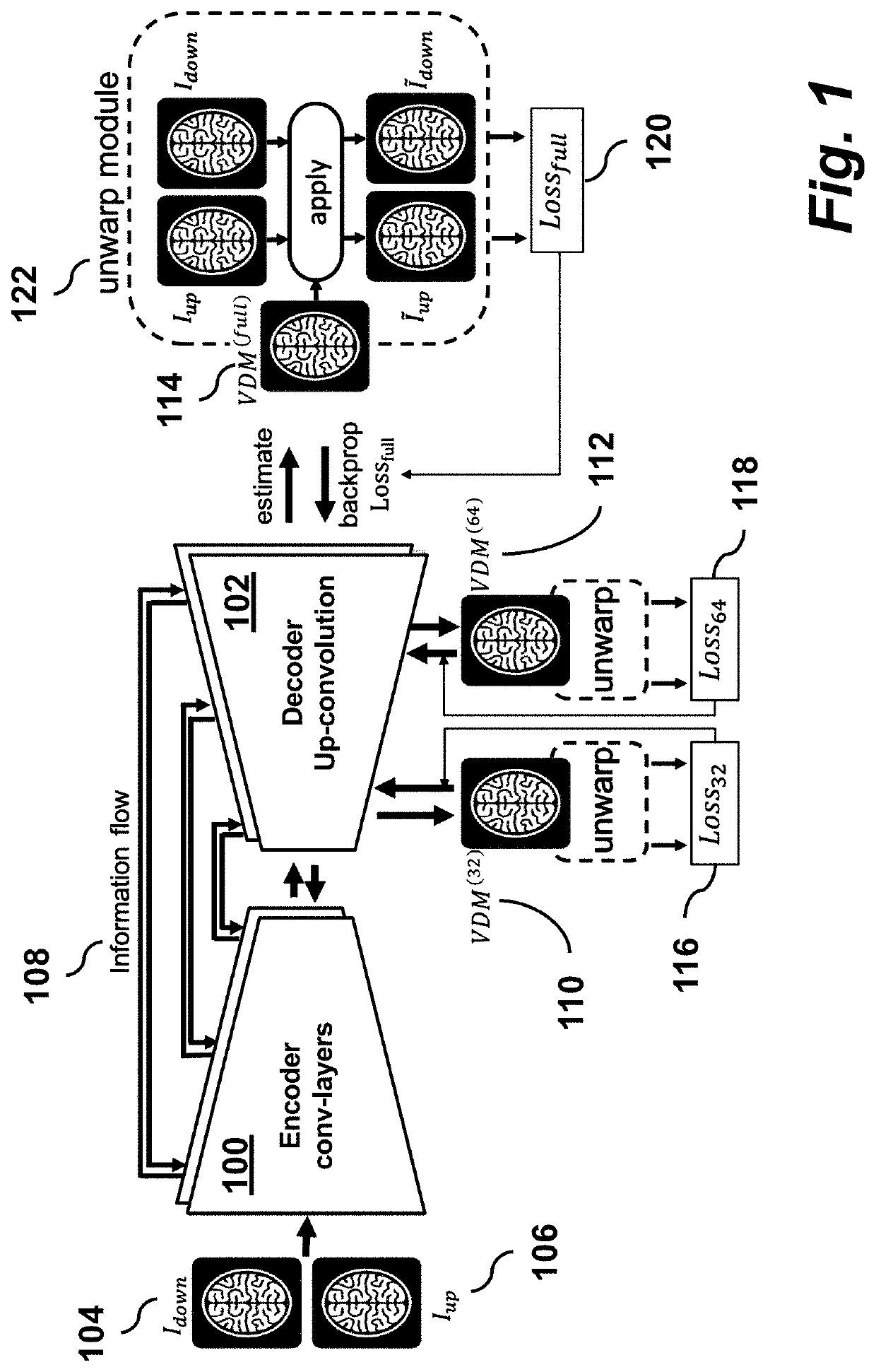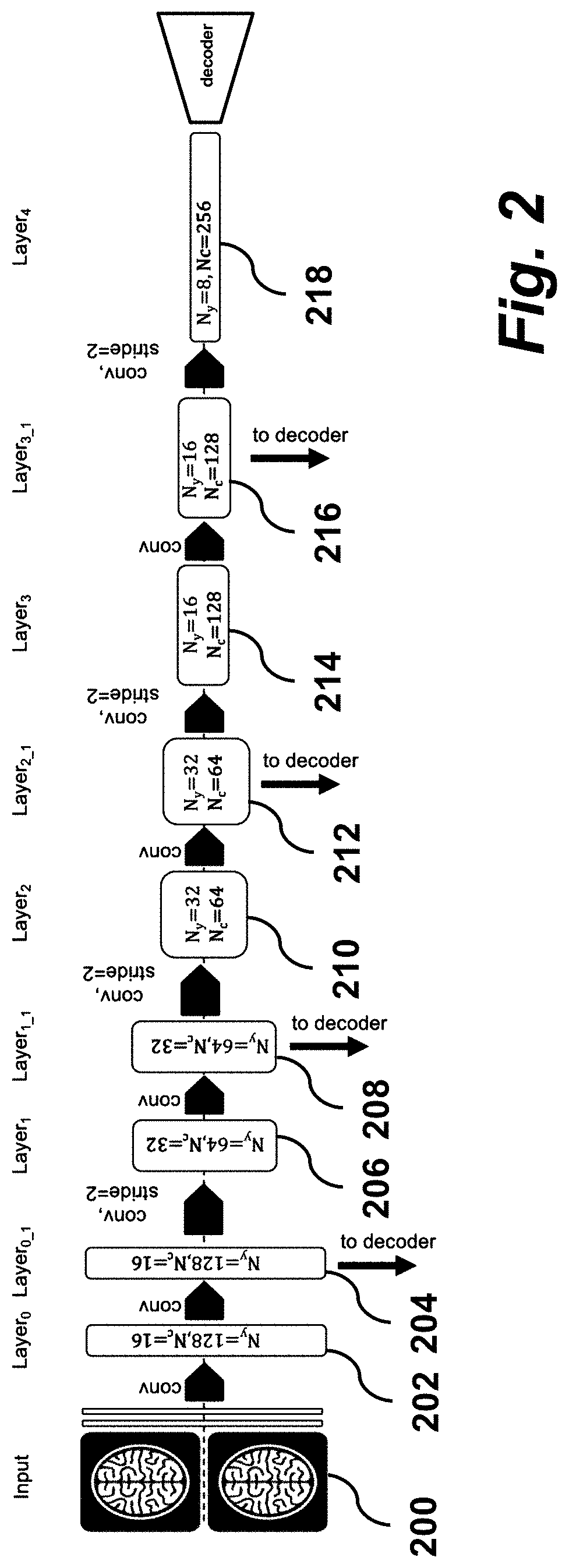Un-supervised convolutional neural network for distortion map estimation and correction in MRI
a convolutional neural network and distortion map technology, applied in the field of magnetic resonance imaging, can solve the problems of significant reduction of computational time and difficult to obtain real-life data, and achieve the effect of facilitating the use of a blip up/down scheme, reducing computational time, and reducing processing tim
- Summary
- Abstract
- Description
- Claims
- Application Information
AI Technical Summary
Benefits of technology
Problems solved by technology
Method used
Image
Examples
Embodiment Construction
[0020]FIG. 1 shows a processing pipeline and associated network architecture illustrating a method of distortion map estimation according to an embodiment of the invention. An unsupervised deep convolutional neural net has a U-Net (Ronneberger et al., 2015) architecture with an encoder section 100 and a decoder section 102. The input to the encoder 100 is an up / down image pair 104, 106 denoted Iup and Idown and represented as a Nx×Ny×2 tensor. The input images Iup and Idown are down-sampled to a 64×64 and to a 32×32 grid as a pre-processing step. Then the full resolution up / down pair is propagated through the encoder network 100 with a series of convolution layers with decreasing feature map dimensions. As the feature map dimension is decreased, the number of channels is increased between layers resulting in an 8×8 map with Nc=256 channels.
[0021]The final feature map (8×8×Nc) of the encoder 100 is fed into a decoder 102 network where the full image resolution is gradually restored b...
PUM
 Login to View More
Login to View More Abstract
Description
Claims
Application Information
 Login to View More
Login to View More - R&D
- Intellectual Property
- Life Sciences
- Materials
- Tech Scout
- Unparalleled Data Quality
- Higher Quality Content
- 60% Fewer Hallucinations
Browse by: Latest US Patents, China's latest patents, Technical Efficacy Thesaurus, Application Domain, Technology Topic, Popular Technical Reports.
© 2025 PatSnap. All rights reserved.Legal|Privacy policy|Modern Slavery Act Transparency Statement|Sitemap|About US| Contact US: help@patsnap.com



